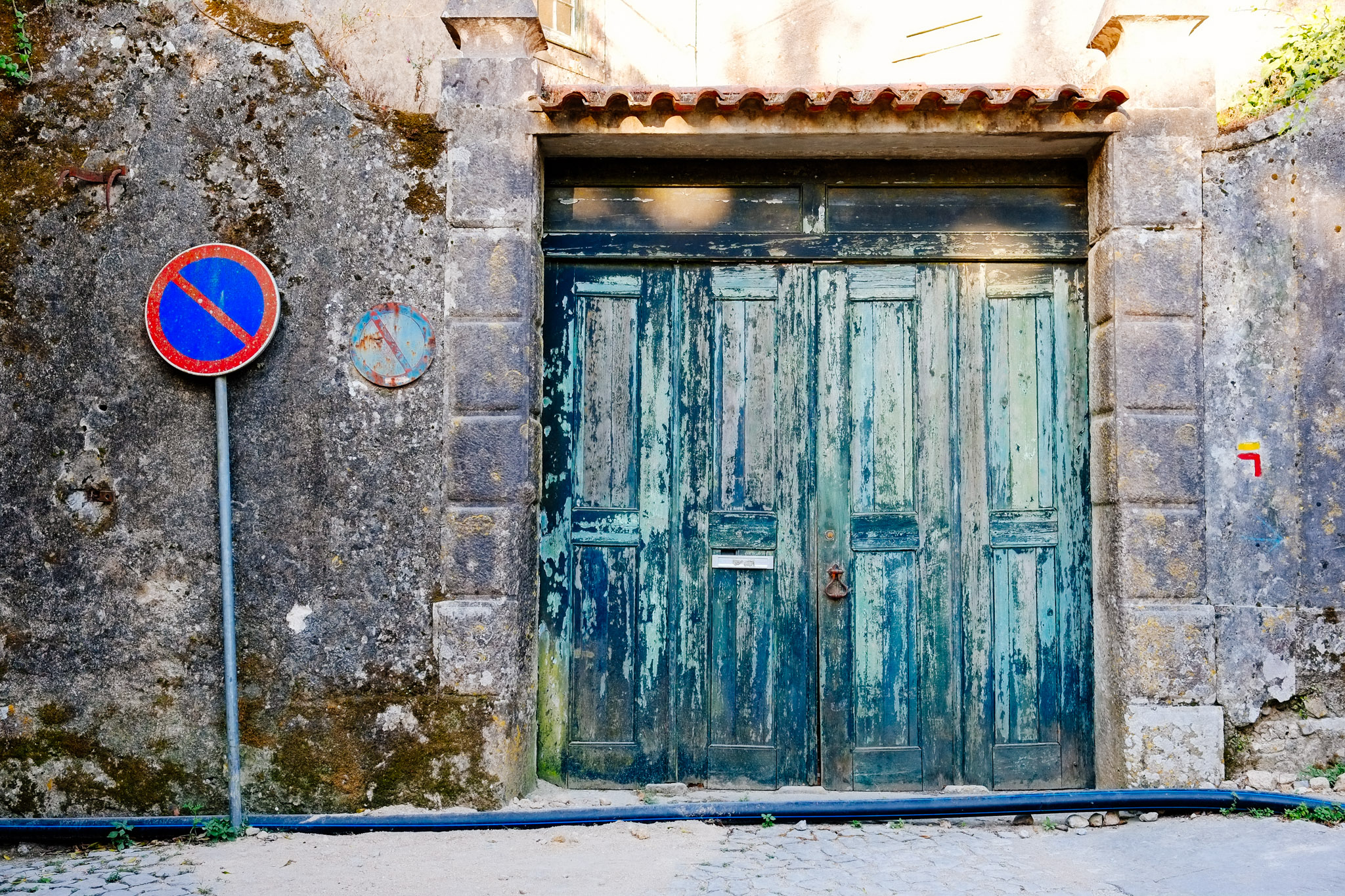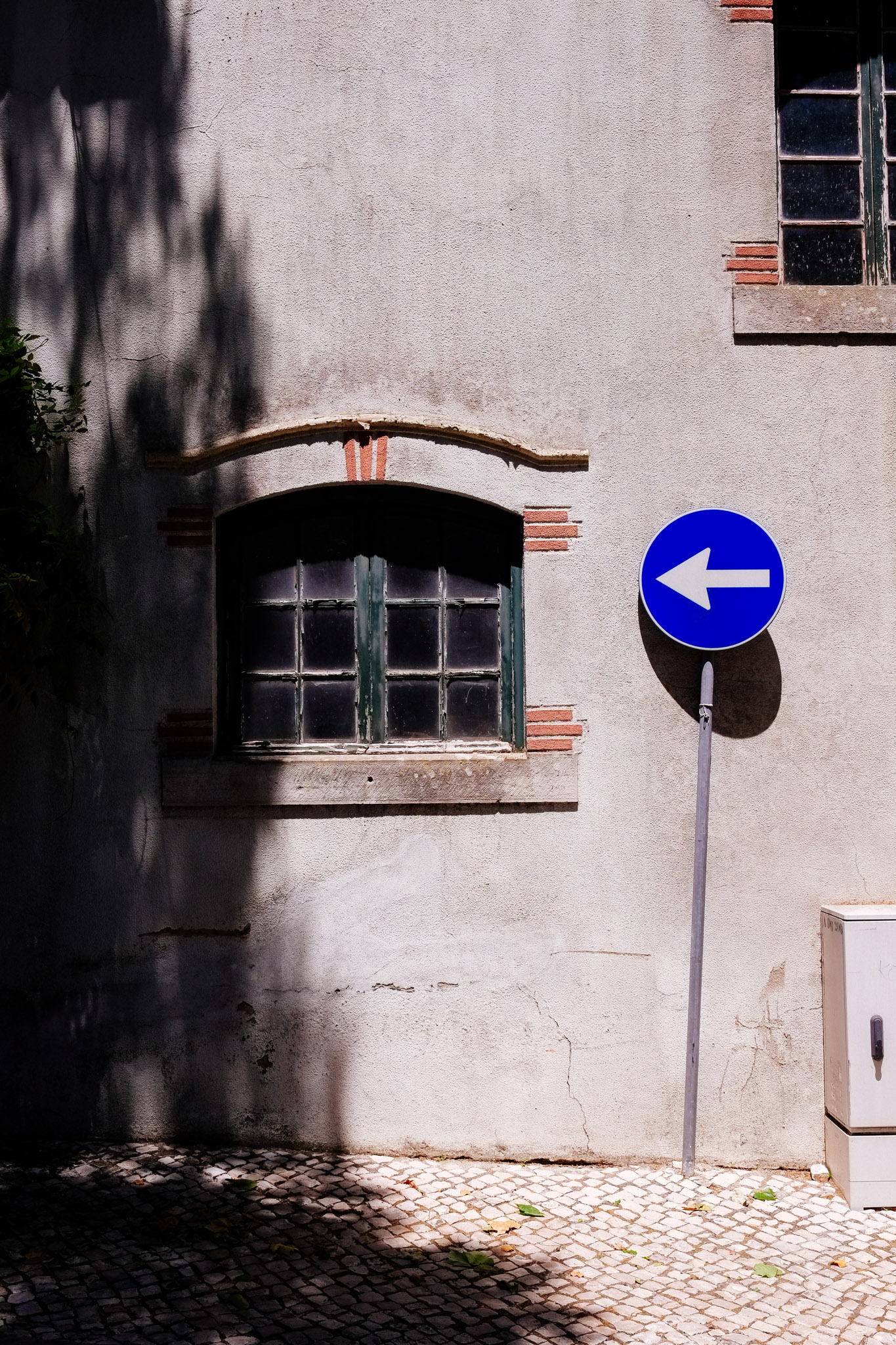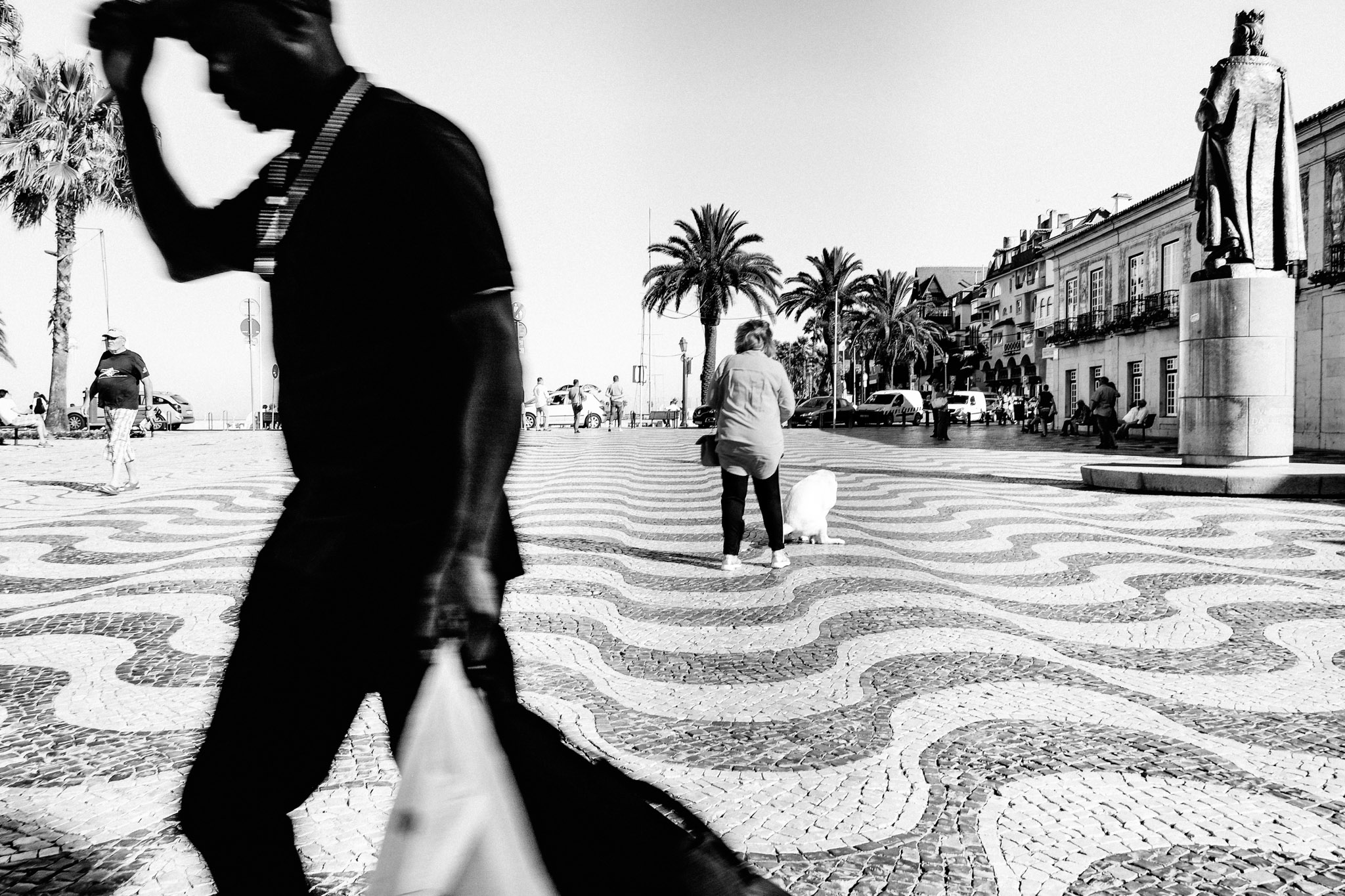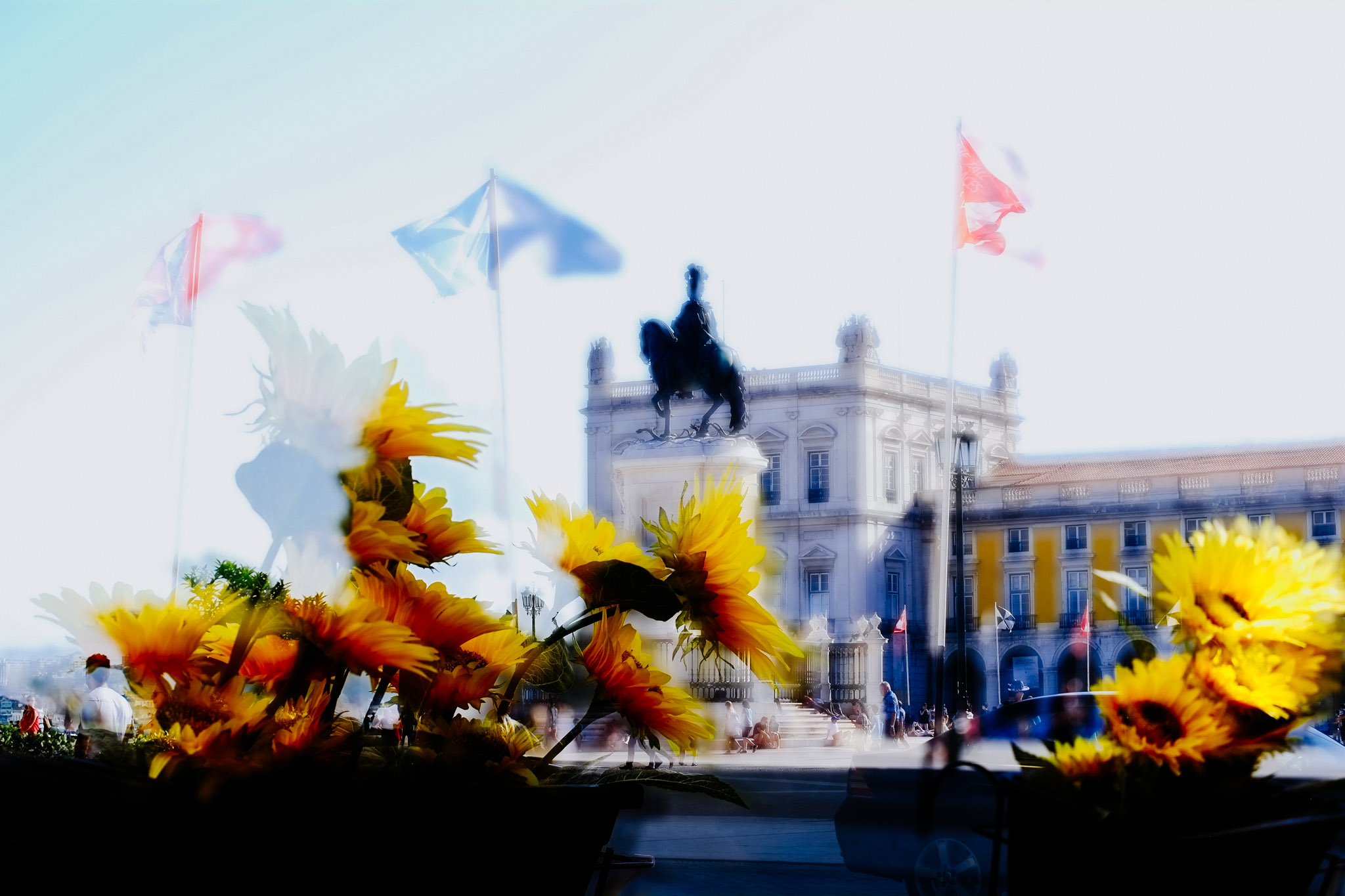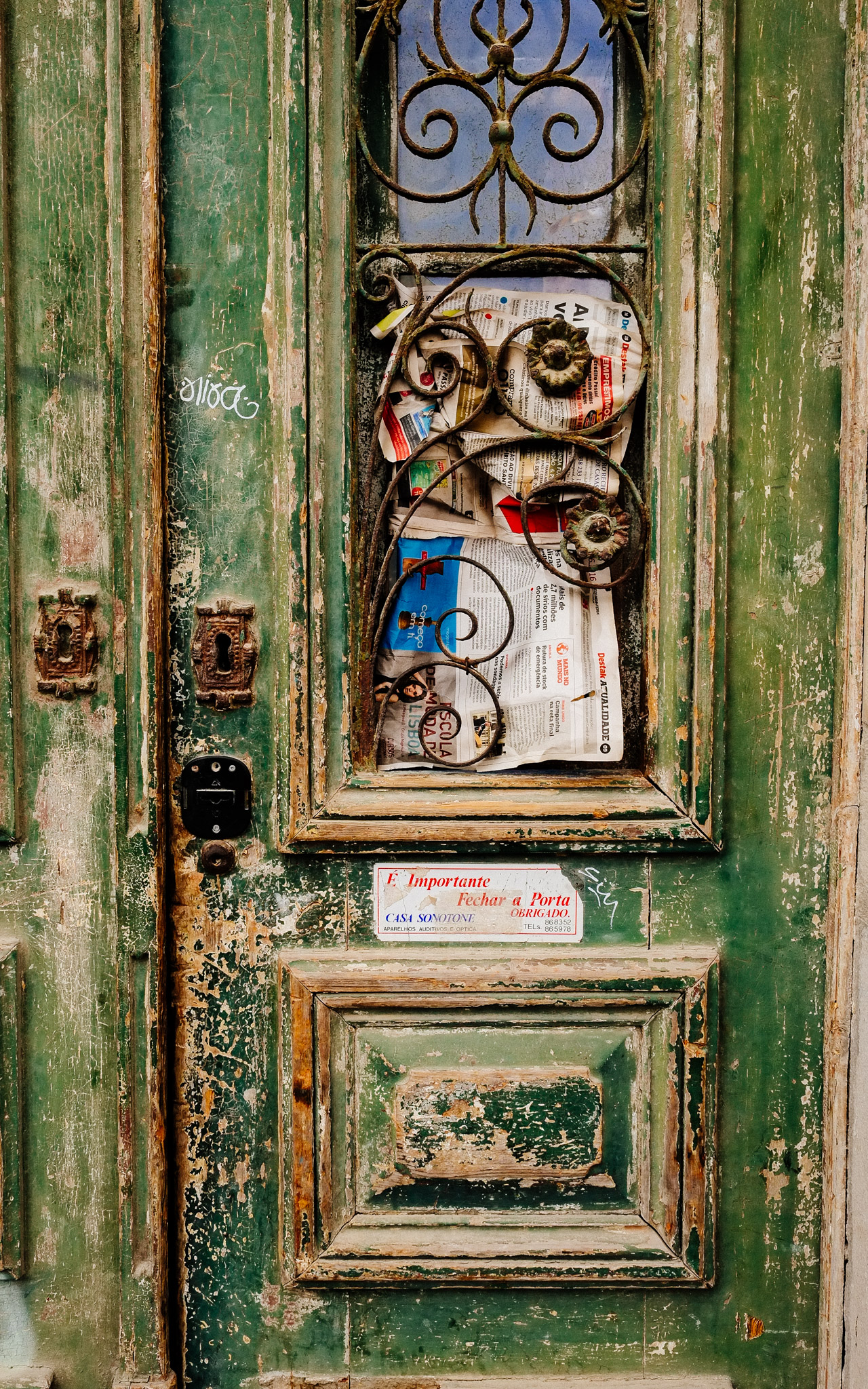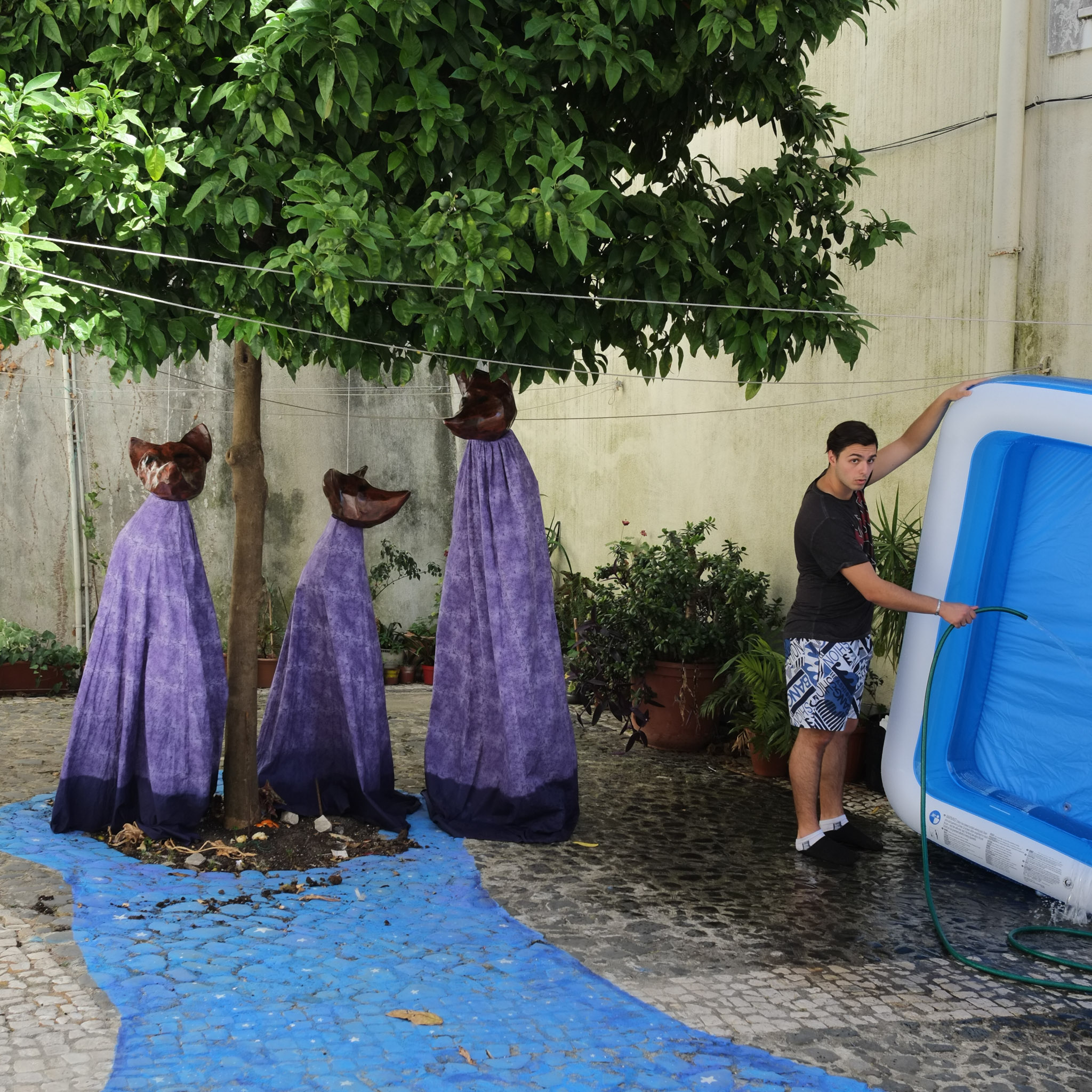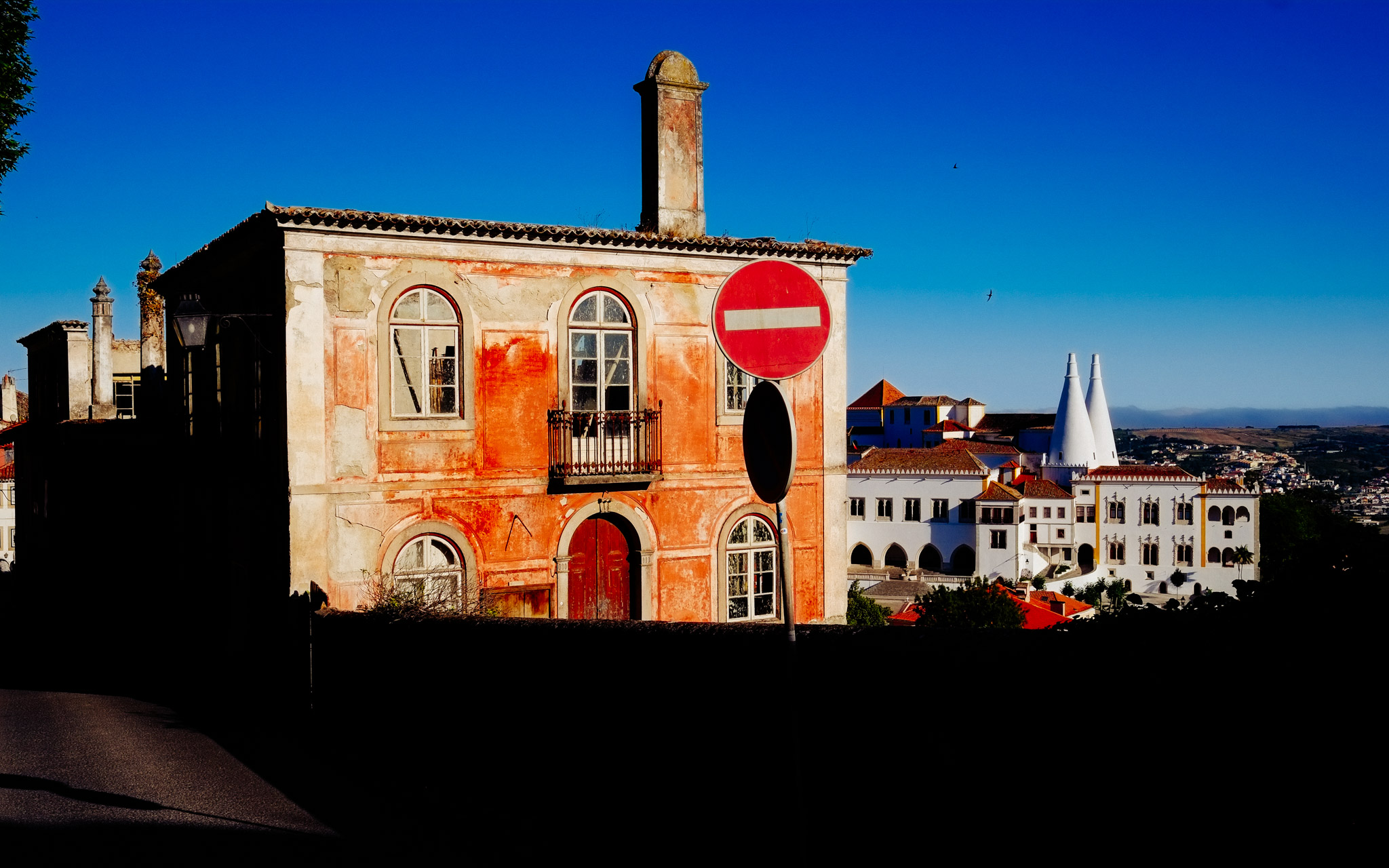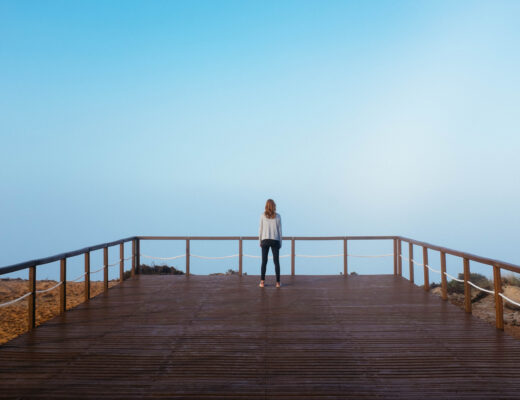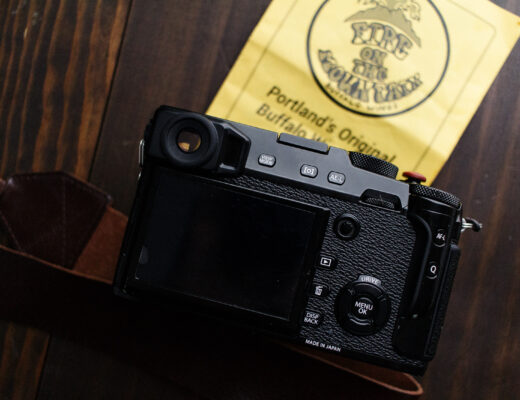I’ve had the X-Pro1 for a few years now, but for the last few months it has been sitting in my drawer as I use a full frame Canon 6D for my work. Whenever it comes to travelling though, I always reach for my Fuji and a bagful of those exquisite small prime lenses that Fujifilm are so good at. As well as the 35mm f1.4, 18mm f2 and 23mm f1.4, I recently bought a Zeiss Touit 50mm which is really a macro lens but does make a great short telephoto as well.
So when we packed for a ten-day trip to Portugal, the X-Pro1 came out of the drawer in favour of the more cumbersome Canon kit. I’m glad I did, because it turned out to be not just a chance to reacquaint myself with an old love, but also a revaluation of myself as a photographer.
The X-Pro1 was a breakthrough camera, the first of a distinguished line of X models, although not without its peculiarities and of course a much criticised auto focus system that was slow and not particularly accurate. Of course all this is a distant memory as all subsequent X cameras have great AF and a host of other improvements. So where does that leave the X-Pro1? Not as bad as you think as it turns out. It was a breakthrough camera not just because of those retro good looks (like a fifties film star), but because it put you in touch again with the building blocks of all photography: shutter speed, aperture, ISO, all linked together in a simple intuitive way. It was also compact and discreet, perfect for street photography and to top it all (as I’ve mentioned) a set of beautiful lenses with real live aperture rings. Some of the XF lenses have got a bit large I think – sure they have superb optical performance but I always thought the point of a small camera is to use small primes that will fit in your pockets. The XF 23mm is about as large as I go for that reason.

We stayed at an apartment in Sintra, just West of Lisbon in the hills where in the summer it is slightly cooler. I always like to have a base from which to explore the surroundings and rather than touring around a lot I prefer to get to know a place, its back streets, the people and customs. Sintra’s centre is touristy but once the day trippers from Lisbon have gone it is quiet and picturesque. I also took to walking a lot early in the morning to catch local people going to work and the best light. However inevitably even we had to hustle with the crowds when visiting the main sights.

It didn’t take long to get back into the X-Pro1. I instinctively wound the strap around my wrist in just a way that the camera hangs from my hand with my finger over the shutter release, it felt comfortable. I’ve also always loved the dual optical and electronic viewfinder, switching between the two is easy. The EV is a bit low res by today’s standards, but its good enough to compose a picture, after all you’re not there to admire the viewfinder image, it’s the final image that counts. Oh yes I forgot to mention the other breakthrough feature of the X-Pro1 – incredible image quality. I still marvel at the colours of the JPEGs and love to jiggle about with the settings, adding shadow depth for example.
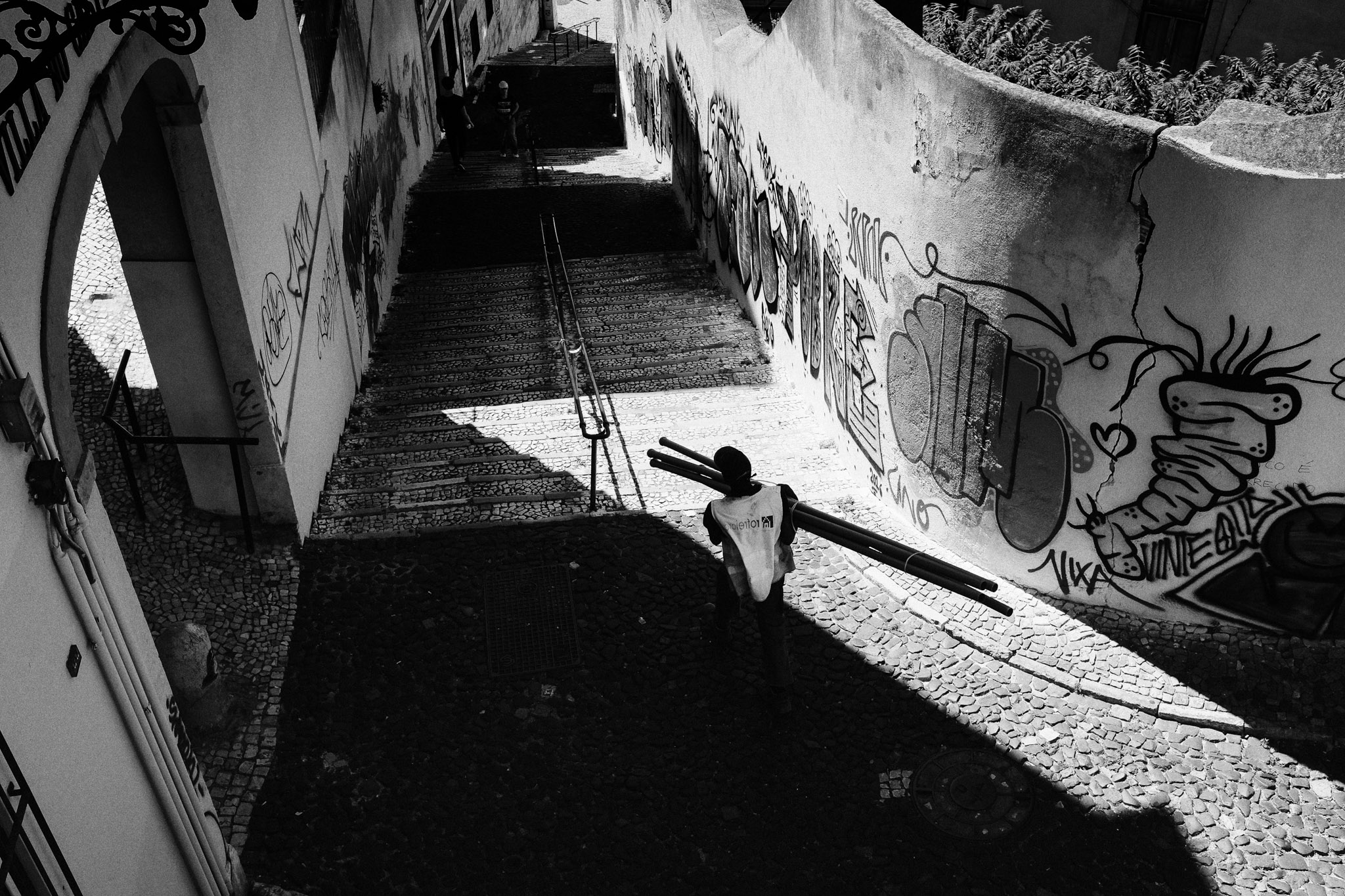
I like to imagine what sort of photographs I am going to take before setting off with my camera and this time I had thoughts about street photography and also using slow shutter speeds in bright light. I bought some very cheap ND filters for this and luckily the small XF lenses have the same filter size, as well as the Zeiss.
It wasn’t until I got back home and had a chance to view the photographs properly (no wifi on the X-Pro1) that I realised I had taken a lot of photographs of Portuguese doors. Old weathered doors always attract me for some reason but at the time I was photographing them almost unconsciously as my mind was focussed on street photography, the door photos came directly from an inner desire. That is the great thing about X cameras – you can forget about the task of photographing, you can capture whatever takes your eye and it all comes into place.
The autofocus issue with the X-Pro1 was not a problem for me. It’s not super-fast but then neither am I! I have a habit of staring at situations for a while before taking a photo and often pre focus on the scene I am looking at. There were occasions when I needed to grab a shot quickly and the focus struggled and hunted to keep up with my intentions but these times were few.
As the days went by I became more attached to the X-Pro1, I understood its limitations and actually enjoyed them! Any creative activity can benefit from a restriction, either deliberate or imposed as it focusses your mind on what can be achieved within set parameters. If you don’t believe me listen to the suites for solo cello by J. S Bach. He could write for whole orchestras but one day decided to write for just a single instrument and it’s a masterpiece!
I can’t claim my photographs are masterpieces but I think they show that am really looking at the scene and making visual connections or trying to convey something more than a pretty picture. The X-Pro1 lets me get on with what’s in front of me and what is in my head, in other words the technology gets out of the way.
You have to be careful with the button layout on the X-Pro1, I have large hands and a tendency to press buttons I don’t mean to press. I was taking double exposures when I didn’t mean to. At first this annoyed me and after a search through menus I realised I had assigned a button to double exposure on a previous trip. However even that experience made my think about double exposures and I ended up with some interesting results.
I was enjoying using fully manual settings on the X-Pro1, choosing a shutter speed on the top dial and using the aperture ring on the lenses, checking the exposure levels in the viewfinder. This method of working means you have to have your eye to the viewfinder and immediately you are more sensitised to the lighting conditions as you check for under or over exposure. This is the old way – the way cameras used to work before we believed technology can do everything better than we can. I think those Fuji guys knew this when they were developing the X-Pro1 – they wanted to give back control to the photographer and they succeeded – thank you Fuji!
Being the master of your own mistakes is truly liberating! So some shots are not the “correct” exposure but who cares, try again. OK so this method is probably best not used at a family wedding but with travel photography it’s important to get into the flow and going fully manual really keeps you on your toes. I am so glad all X cameras, despite all the new technology, still adhere to the basic philosophy of putting the photographer in control.
By the end of my trip I was using fully manual plus manual focus. This was something I’ve never done before with the X-Pro1 and I was unsure at first. The focus peaking (a firmware upgrade on the X-Pro1 I seem to remember) works fine, as does the focus rings on the lenses. Now I was really in full control – no shortcuts, no excuses. I have to say the experience felt like I was flying an aeroplane on my own for the first time – an incredible feeling of freedom in the face of the obvious pitfalls.
So, in summary I still love the X-Pro1 mainly because it encourages me to become a better photographer, the design nudges me towards ever greater control over the fundamentals of photography and in doing so makes me look harder and think clearer about making more meaningful images. All the X cameras following the X-Pro1 have stuck to this design principle and I believe it is this rather than improved autofocus, better EVF and a bunch of other technology that makes X cameras very special. I would finally make a plea to the Fuji guys – I know you are great at keeping up with technology but please don’t ever forget where it all started!


